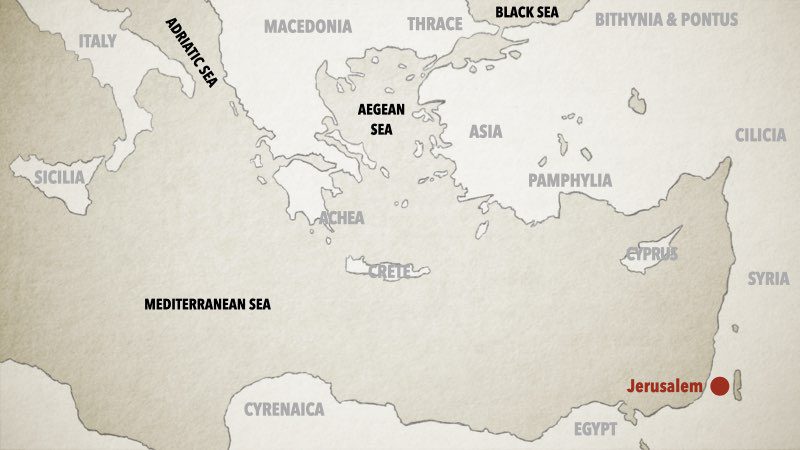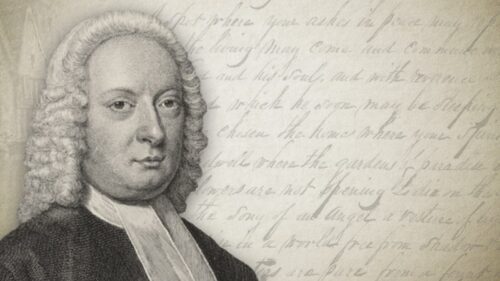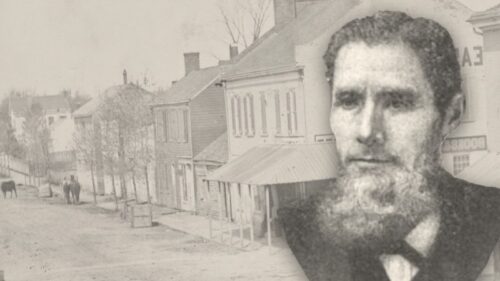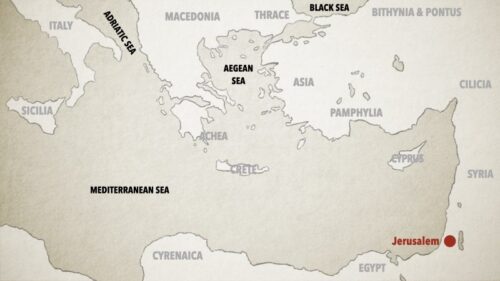-
The Salvation Testimony Of Don Fortner
In May of 2019, the New Focus Conference was held at Gornal Baptist Church, Robert Street, in Dudley, West Midlands, England. Among the speakers was Don Fortner. He prefaced his sermon with a personal testimony on how the Lord brought his soul to a saving knowledge of Christ. Unknown to me at the time, my wife recorded the two minute testimony, for which I am forever grateful; not only to have a record of his testimony in his own voice, but to know that my grandfather, Jewell Smith, was the preacher under whom the Lord was pleased to open his understanding to the grace of God. I thank Christ Jesus our Lord, who has not only put me into the ministry, but has been pleased…
-
The Letter Of Paul To The Churches At Colosse
I believe the letter of Paul to the churches at Colosse was written in the year 62AD, making it the eighth of his fourteen epistles. The chart below provides a bird’s-eye view of the chronological order for the books of the New Testament. John Gill, “Commentary On The New Testament Scriptures”: “The Colossians, to whom this epistle is written, were not the Rhodians, by some called Colossians, from Colossus, the large statue of the sun, which stood in the island of Rhodes, and was one of the seven wonders of the world; but the inhabitants of Colosse, a city of the greater Phrygia, in the lesser Asia, near to which stood the cities of Laodicea and Hierapolis, mentioned in this epistle. Pliny speaks of it…
-
The Letter Of Paul To Philemon
I believe the letter of Paul to Philemon was written in the year 62AD, making it the ninth of his fourteen epistles. The chart below provides a bird’s-eye view of the chronological order for the books of the New Testament. John Gill, “Commentary On The New Testament Scriptures”: “This epistle was written by the Apostle Paul, when a prisoner at Rome, as appears from its inscription and subscription; and seems to have been written at the same time, in the year 60, and sent by the same hand, as the epistle to the Colossians; seeing the same persons were with the apostle at the writing of both, and send their Christian salutations in the one, as in the other; compare (Philemon 1:23,24) with (Colossians 4:10,12,14)…
-
The Letter Of Paul To The Churches At Philippi
I believe the letter of Paul to the churches at Philippi was written in the year 63AD, making it the tenth of his fourteen epistles. The chart below provides a bird’s-eye view of the chronological order for the books of the New Testament. John Gill, “Commentary On The New Testament Scriptures”: “Philippi was a Roman colony, and the chief city of one part of Macedonia, (Acts 16:12), it is by Appianus called Datos which was its original name; and by Diodorus Siculus it is called Crenidae, from, the fountains about it; and it took its name Philippi, from Philip king of Macedon, father of Alexander the great, who rebuilt and fortified it; near this place a famous battle was fought, and a victory obtained by…
-
The First Letter Of Paul To Timothy
I believe the first letter of Paul to Timothy was written in the year 67AD, making it the eleventh of his fourteen epistles. The chart below provides a bird’s-eye view of the chronological order for the books of the New Testament. John Gill, “Commentary On The New Testament Scriptures”: “Timothy, to whom this epistle is written, was eminent for his early piety and acquaintance with the sacred Scriptures; his mother was a Jewess, and his father a Greek, which was the reason why he was not circumcised in his infancy. Mention is made in the second epistle to him of his mother Eunice, and grandmother Lois, as believers, and of his knowledge of the Scriptures from a child: this excellent person the apostle meeting with…
-
The Letter Of Paul To Titus
I believe the letter of Paul to Titus was written in the year 67AD, making it the twelfth of his fourteen epistles. The chart below provides a bird’s-eye view of the chronological order for the books of the New Testament. John Gill, “Commentary On The New Testament Scriptures”: “Titus, to whom this epistle is inscribed, was a Greek, an uncircumcised Gentile, and so remained; nor did the apostle circumcise him, as he did Timothy, when he became his companion; nor did the apostles at Jerusalem oblige him to be circumcised, when Paul took him with Barnabas along with him thither, (Galatians 2:1,3). He was a man of great grace, and large gifts, and very dear to the apostle: he calls him his brother, his partner,…






